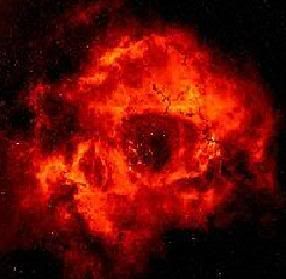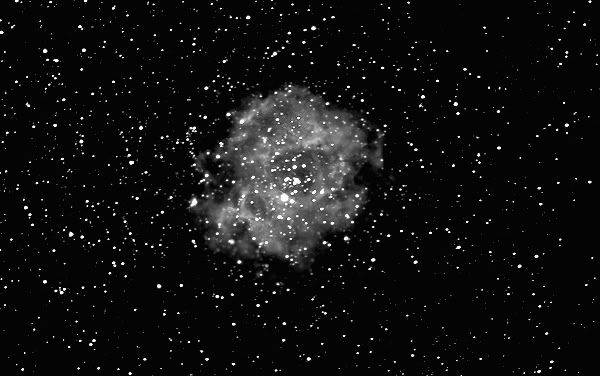Post by glactus on Jan 10, 2009 22:15:16 GMT

The Rosetta nebula
The Rosette Nebula is a large, circular H II region located near one end of a giant molecular cloud in the Monoceros region of the Milky Way Galaxy. The open cluster NGC 2244 is closely associated with the nebulosity, the stars of the cluster having been formed from the nebula's matter.
The complex has the following NGC designations:
NGC 2237 - Part of the nebulous region (Usual
NGC 2238 - Part of the nebulous region
NGC 2239 - Part of the nebulous region
NGC 2244 - The open cluster within the nebula
NGC 2246 - Part of the nebulous region
The cluster and nebula lie at a distance of some 5,200 light years from Earth (although estimates of the distance vary considerably) and measure roughly 130 light years in diameter. The radiation from the young stars excite the atoms in the nebula, causing them to emit radiation themselves producing the emission nebula we see. The mass of the nebula is estimated to be around 10,000 solar masses. Magnitude (variable) is 9.0
It is believed that stellar winds from a group of O and B stars are exerting pressure on interstellar clouds to cause compression, followed by star formation in the nebula. This star formation is currently still ongoing.
A survey of the nebula with the Chandra X-ray Observatory in 2001 has revealed the presence of very hot, young stars at the core of the Rosette Nebula. These stars have heated the surrounding gas to a temperature in the order of 6 million kelvins causing them to emit copious amounts of X-rays.
Credits: This is a NASA/Hubble image




